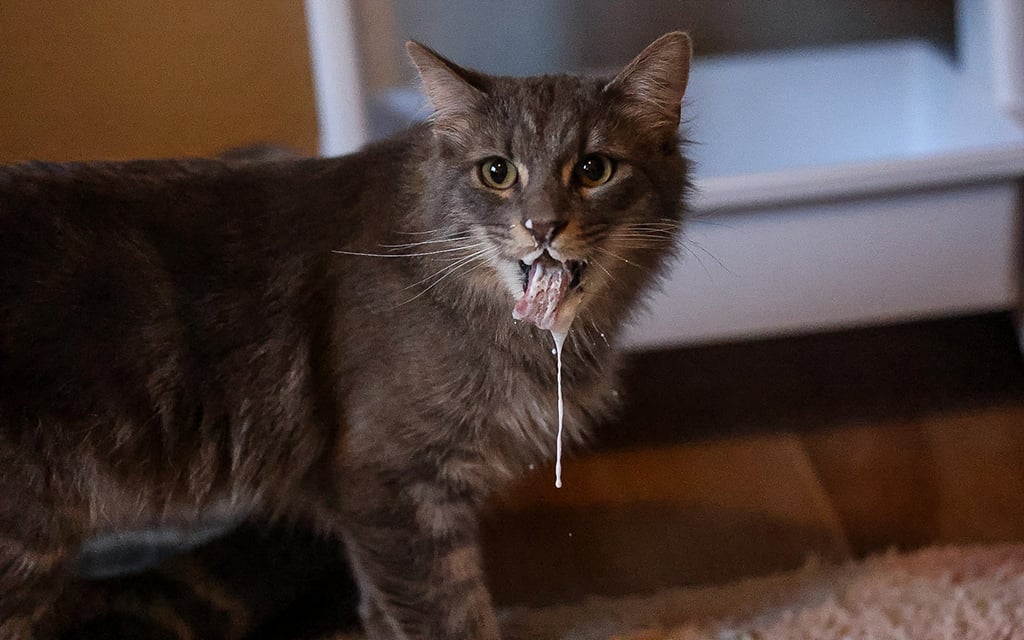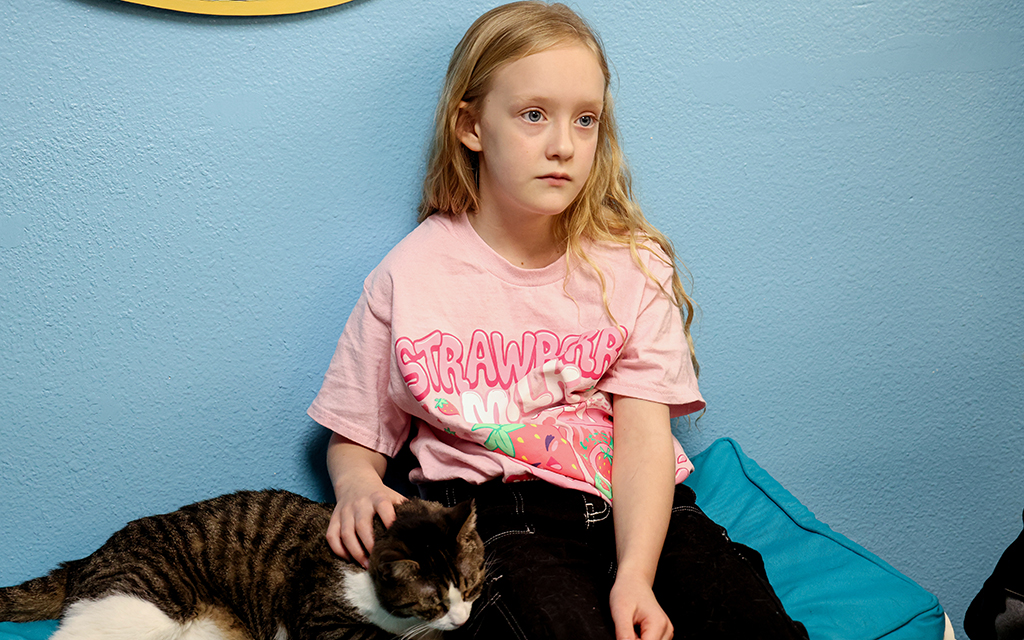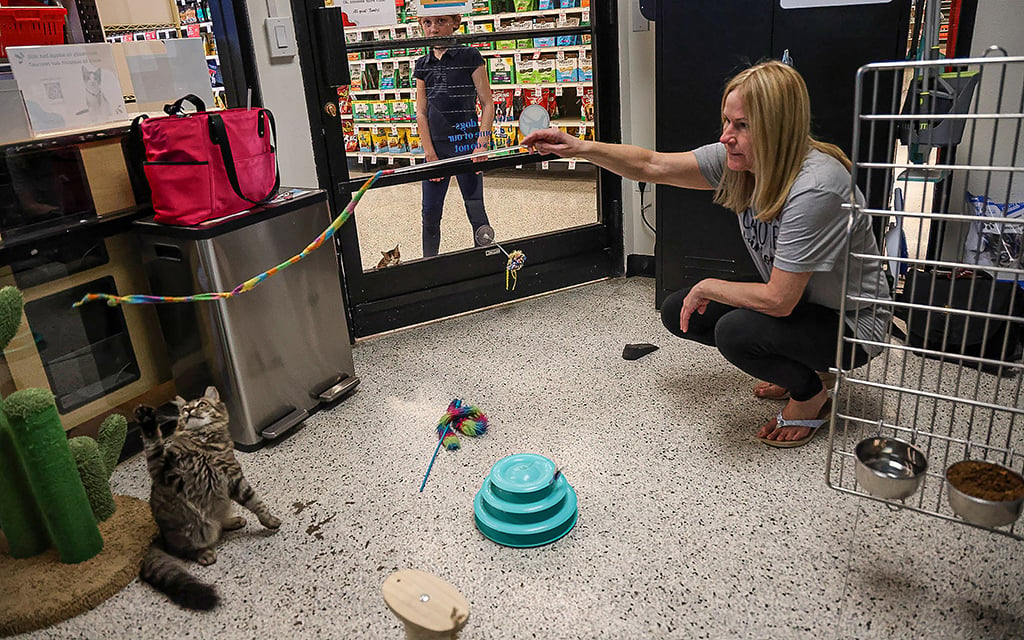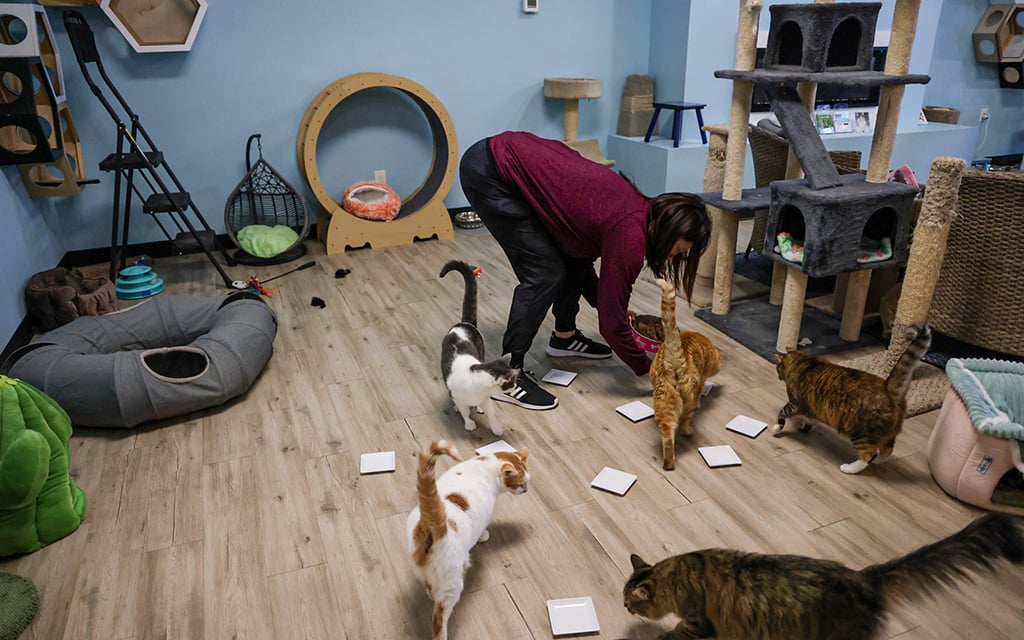PHOENIX – According to the annual Shelters Animal Count report, 41% of cats that ended up in Arizona shelters in the first quarter of this year were strays. There are many animal organizations that contribute to the well-being and care for these cats. Cronkite News followed volunteers with one organization to see what it takes to get a cat from the cold streets to a warm, safe home.
Saving One Life is a nonprofit organization that provides care for at-risk cats and dogs through foster and adoption programs. Anna Zhundrikova, is a volunteer who helps coordinate the organization’s Trap-Neuter-Return (TNR) program. According to Saving One life, it uses TNR to humanely trap feral cats and spay or neuter them in order to help decrease the population. Once the cats have healed, they are returned to the colony in the area where they were trapped.
Zhundrikova spends many nights a week driving around to different locations to feed homeless cats in Phoenix. Colony feeding, as it’s known, usually takes place late in the evening when the cats are most active. Zhundrikova said she continues to volunteer because she has compassion for animals and doesn’t want to see them suffer.

Zoe Zaine and Clover Kay, wait to be adopted on Feb. 14, 2024, at the Saving One Life location in PetSmart in Phoenix. (Photo by Mariah Temprendola/Cronkite News)
“I’ve always been one that is passionate about the community, no matter how that looks, whether that’s animal-related or human, and this is just another one of those things where it impacts us in a way that I think a lot of people don’t realize,” Zhundrikova said.
Saving One Life distributes approximately 1,000 pounds of cat food per week to identified colonies, according to the website.
Many of the cats volunteers encounter will be trapped in order to determine whether they are suitable for fostering or if they need to be spayed or neutered. If the cats can no longer be domesticated due to being in the wild for too long, Saving One Life will treat them for health issues, neuter or spay them and then release them. Saving One Life provides for about 800 cats around the Phoenix area every day, according to its website.

Saving One Life volunteer Kelly Stinson weighs a cat as part of her requirements as a foster parent on Feb. 28, 2024, in Chandler. (Photo by Mariah Temprendola/Cronkite News)
Fostering is another part of the group’s mission. After a cat is trapped and deemed suitable for fostering, it is placed with a volunteer. Once a cat is in a foster home, it gets daily love, attention and medical treatment, including flea baths and medication for deworming, daily weight checks and vaccines for common diseases.

Hank, one of Kelly Stinson’s foster cats, receives his deworming medicine on Feb. 28, 2024, in Chandler. Stinson has fostered a total of 75 cats, and all of them have found homes. (Photo by Mariah Temprendola/Cronkite News)
Saving One Life volunteer Kelly Stinson said she never planned to foster cats, but once her son started volunteering at the PetSmart, she discovered her love of fostering.
“It just feels really good to be able to give back to the community this way. It just breaks my heart any time I think about any animal that’s been abandoned or mistreated, and for me to be able to give a cat a chance to go into a loving home just makes me feel like I’m contributing,” Stinson said.

Jojo Wangler, 7, a Saving One Life volunteer, pets a cat on Feb. 14, 2024, at PetSmart in Phoenix. She volunteers with her mom, Rylie Wangler, and her sister to help cats and bond with her family. (Photo by Mariah Temprendola/Cronkite News)
Cats who need extra medical care are seen by veterinarians, and every cat is spayed or neutered before they are adopted out. Cats ready for adoption often go to PetSmart locations throughout Arizona or to the Kitty Pause Kitty Café in Mesa. Rylie Wangler, a PetSmart volunteer, plays with and cares for the kitties with her two daughters. She said volunteering is a way of bonding with her kids and that she enjoys seeing the cats find loving homes. “I would say the next piece for me is to find their forever home. It’s the whole process. It’s so heartwarming,” Wangler said.

From left, Hannah Galaxy, 10, and Cathy Christensen, volunteer at Saving One Life inside PetSmart in Phoenix on March 20, 2024. Christensen has been volunteering for three years. (Photo by Mariah Temprendola/Cronkite News)

Saving One Life volunteer Kelly Stinson feeds cats at the Kitty Pause Kitty Café in Mesa on Feb. 28, 2024. Kitty Pause Kitty Café partners with Saving One Life on cat adoptions. (Photo by Mariah Temprendola/Cronkite News)

Cats sniff each other at the Kitty Pause Kitty Café on Feb. 28, 2024, in Mesa. (Photo by Mariah Temprendola/Cronkite News)
Saving one Life is a never-kill shelter, meaning it will provide all veterinary needs for animals and only consider euthanasia when all medical options are exhausted, according to its website.
Stinson says it’s heartbreaking to her when she sees a helpless animal abandoned. “I think some people aren’t wired to believe that animals are at the same level as humans. It makes me very sad because people that put kittens in a garbage bag and throw them in a trash can don’t view animals as their equal. I can’t relate to that at all,” Stinson said.


